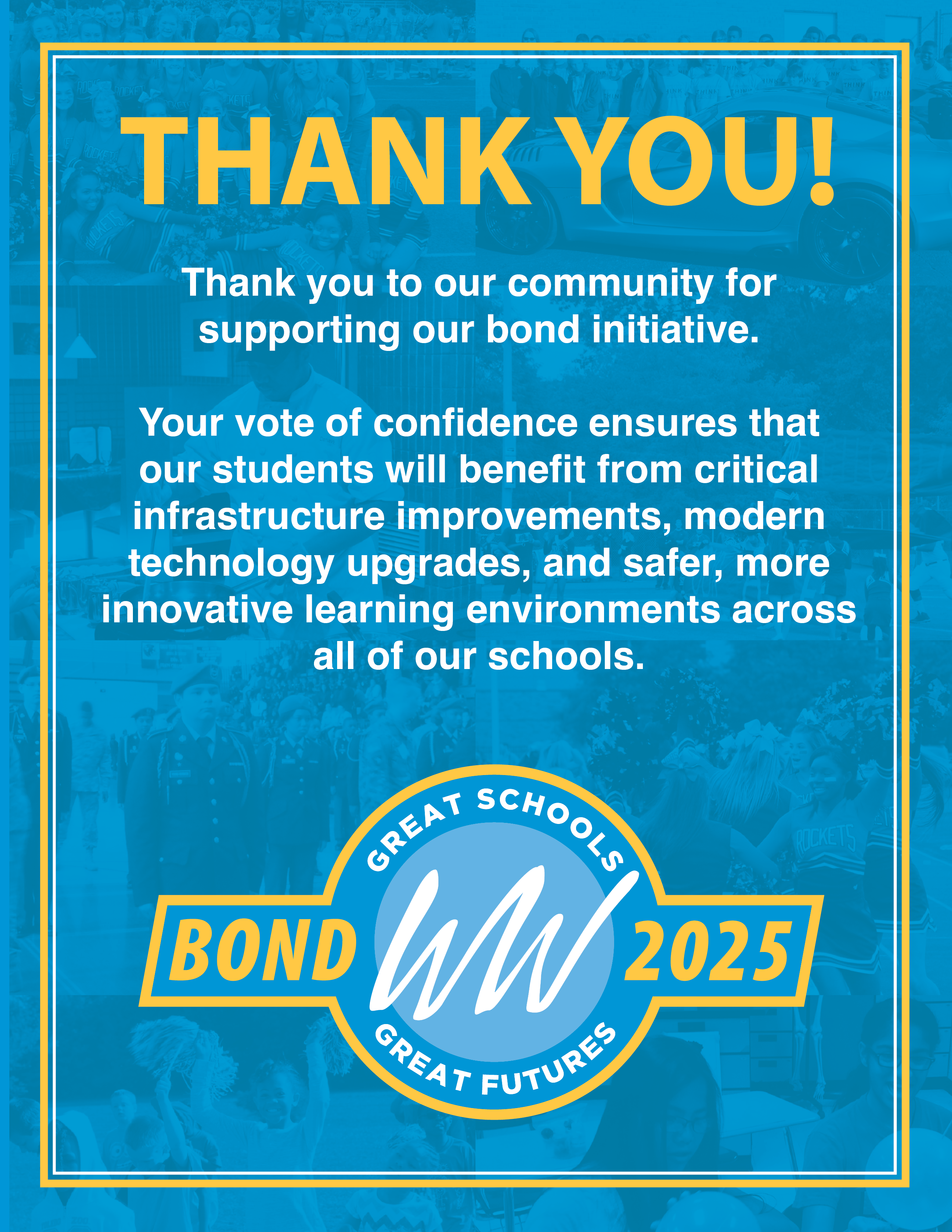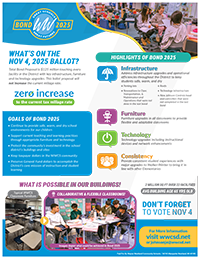Bond 2025

What's on the Nov 4, 2025 Ballot?
Total Bond Proposal is $125 million touching every facility in the District with key infrastructure, furniture and technology upgrades. This ballot proposal will not increase the current millage rate.

Goals of Bond 2025
- Continue to provide safe, warm, and dry school environments for our children
- Support current teaching and learning practices through appropriate furniture and technology
- Protect the community’s investment in the school district’s buildings and sites
- Keep taxpayer dollars in the WWCS community
- Preserve General Fund dollars to accomplish the District’s core mission of instruction and student learning

Address infrastructure upgrades and operational efficiencies throughout the District to keep students safe, warm, and dry
- Parking lots
- Renovations to Dyer, Transportation, & Maintenance and Operations that were not done in the last bond
- Roofs
- Technology infrastructure
- New Johnson Controls head end controllers that were not completed in the last bond

Furniture upgrades in all classrooms to provide flexible and adaptable classrooms

Technology upgrades including instructional devices and network enhancements

Provide consistent student experiences with major upgrades to Walker-Winter to bring it in line with other Elementaries
Who may I contact if I have additional questions?
You are welcome to contact Jenny Johnson at johnsonje@wwcsd.net or 734-419-2001


